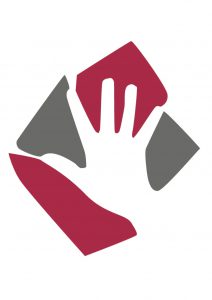TRIGGER DIGIT
This condition results in pain at the base of the finger or thumb with either clicking or locking of the digit in a bent position. This typically occurs when moving the finger or thumb towards the palm. Occasionally you may need to use the other hand to get the digit straight again.
WHAT CAUSES IT?
The cause for this condition is not known but there is an association with Diabetes, Rheumatoid arthritis and Gout.
The problem results from an inflammation of the lining of the tendons that allow the fingers/thumb to be bent towards the palm. The lining of the tendons (referred to as the sheath) forms a tunnel around the tendons allowing them to be nourished by the fluid that surrounds these tendons. In trigger finger/thumb either the entrance to this tunnel (A1 Pulley) tightens or the tendon develops a nodule/thickening secondary to inflammation. The net result is that the tendons fail to glide past the entrance when the finger bends. This results in the catching sensation or locking.
WHAT ARE THE SIGNS AND SYMPTOMS?
In the early phase, pain at the base of the digit is the main feature. This is often associated with a painful lump at the base of the digit in the palm and a catching or clicking when the digit is bent towards the palm. The finger or thumb can occasionally become locked in a bent position and may need to be straightened with the other hand. As the condition progresses it may become difficult to bend the finger beyond a certain point.
HOW IS IT DIAGNOSED?
A detailed history and examination are often all that is needed to make the diagnosis. No special tests will be required.
HOW IS IT TREATED?
In mild cases and when the duration is less than 6 months, anti-inflammatory medication, rest and an injection of steroid and local anaesthetic can resolve the problem in up to 70% of patients. However the injections tend not to work quite so well in patients who suffer with diabetes, have multiple digits involved or the symptoms have been present for greater than 6 months. In this case an operation may be necessary to improve the symptoms.
WHAT DOES THE OPERATION INVOLVE?
The operation aims to release the tight area at the entrance to the tendon lining (A1 Pulley). Thus allowing the tendons to glide more freely. This is performed under local anaesthetic as a day case procedure. The operation takes approximately 15 minutes to perform. It is performed through an incision of between 1-2cm near the base of the finger or thumb in the palm.
AFTERCARE
Following the operation you will normally have a bulky dressing covering your wound for 48hours. This is then replaced with a sticky dressing at 48hours until 10 days following your operation. At 10 days your stitches will be removed.
RETURN TO WORK
This depends on the nature of your work. For a sedentary occupation the time off is normally 2 weeks. For a heavy manual occupation this can be as long as 6 weeks.
DRIVING
It is normally safe to drive within 6-7 days of your operation but it is normally best to leave this until your stitches have been removed at 10 days.
RETURN TO SPORT
This depends on the intensity of the sport but in most cases a return by 6 weeks is the norm. However more physically demanding sports can require as much as 3 months off.
COMPLICATIONS
Like with any surgery there are a number of small risks associated with this operation.
Infection (1%) is a risk with all surgery. In the majority of cases these are infections around the wound and can be treated with a course of antibiotics. The more unusual deep-seated infections however can require admission to hospital and surgery to clean the wound out if necessary.
Swelling and Stiffness can remain for many months following surgery. It is important to elevate the limb and keep all joints that are not immobilised with a splint, active.
Scar Sensitivity is often a problem with surgery in the hand, particularly the palm. This is often self-limiting and daily massage of the scar can shorten the duration of the symptoms. The sensitivity does settle is all cases with time.
Nerve Injury is a potential but very rare risk with this surgery. Often the nerves at greatest risk are the nerves supplying feeling to the corresponding digit. An injury to these nerves may result in an area of numbness that is not often troublesome unless it is in the border digits such as the little and index fingers.
Recurrence is an unusual complication. You may however find that the symptoms recur some time after the original operation having completely settled initially. In this rare event a second operation may be necessary.
Complex Regional Pain Syndrome is an extremely rare (1%) complication that can follow any injury or surgery to a limb. In this situation the nerves in the arm over-react to the point where the hand becomes very painful, swollen and sensitive. This condition does improve with time but can be problematic for many months (see section on Complex Regional Pain Syndrome).
